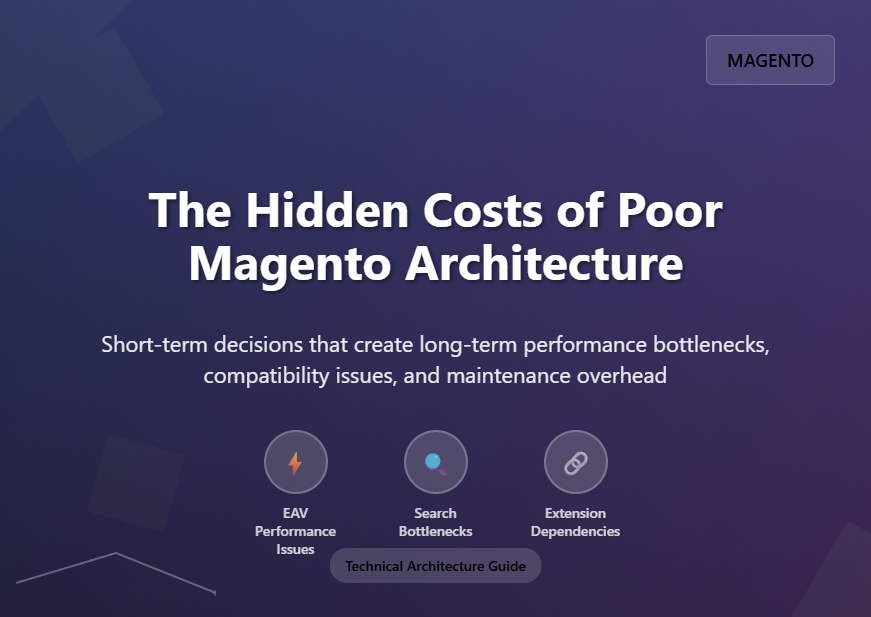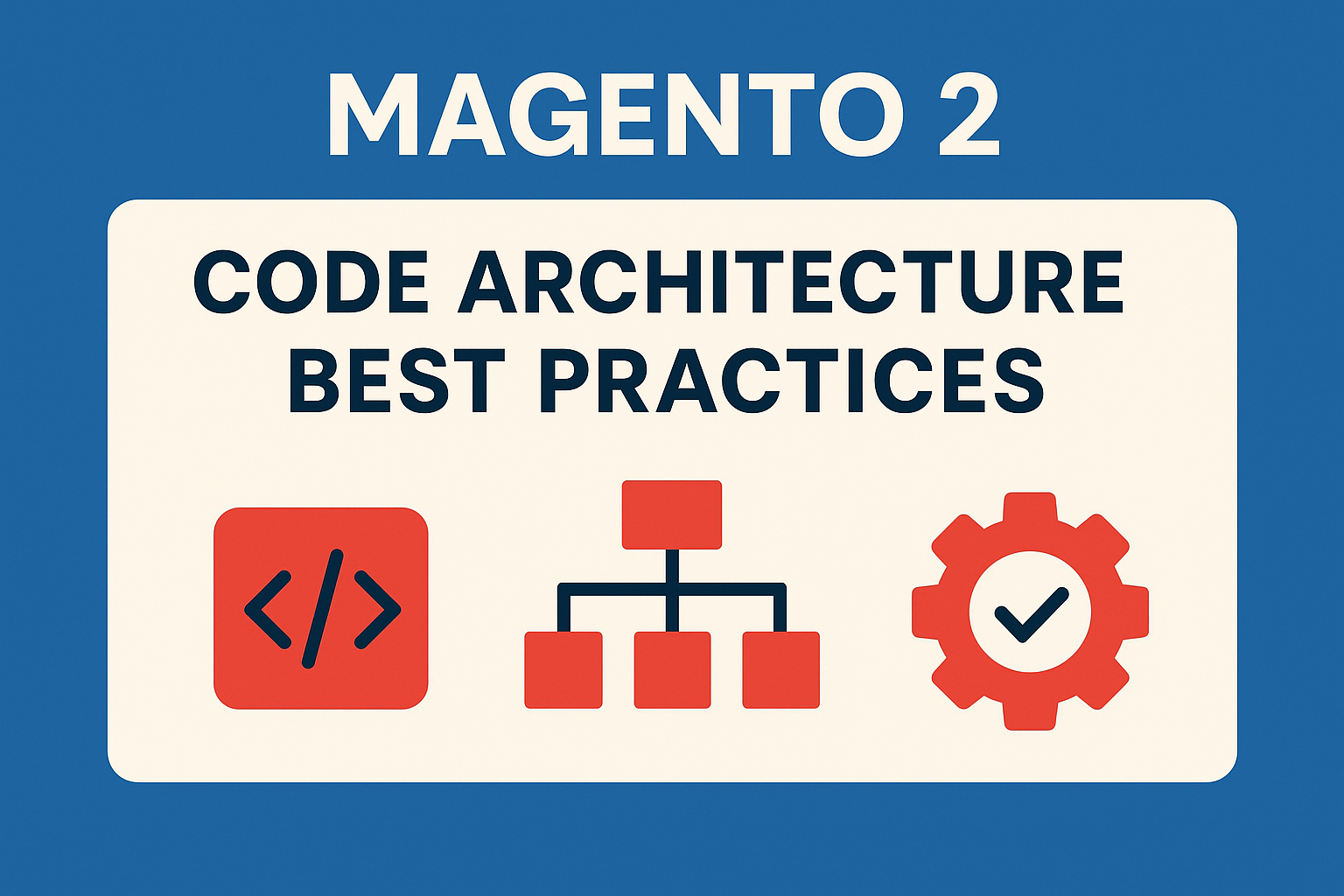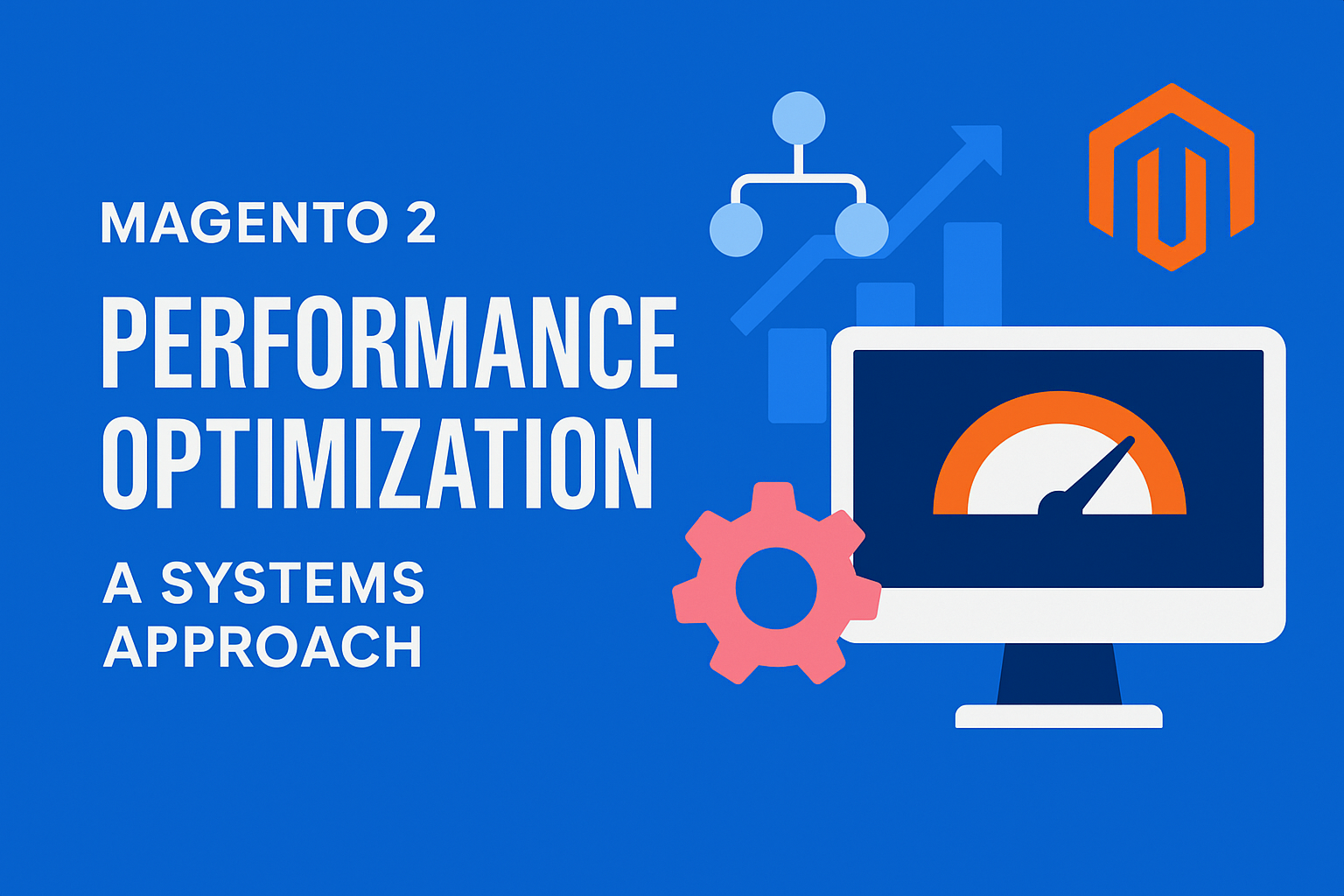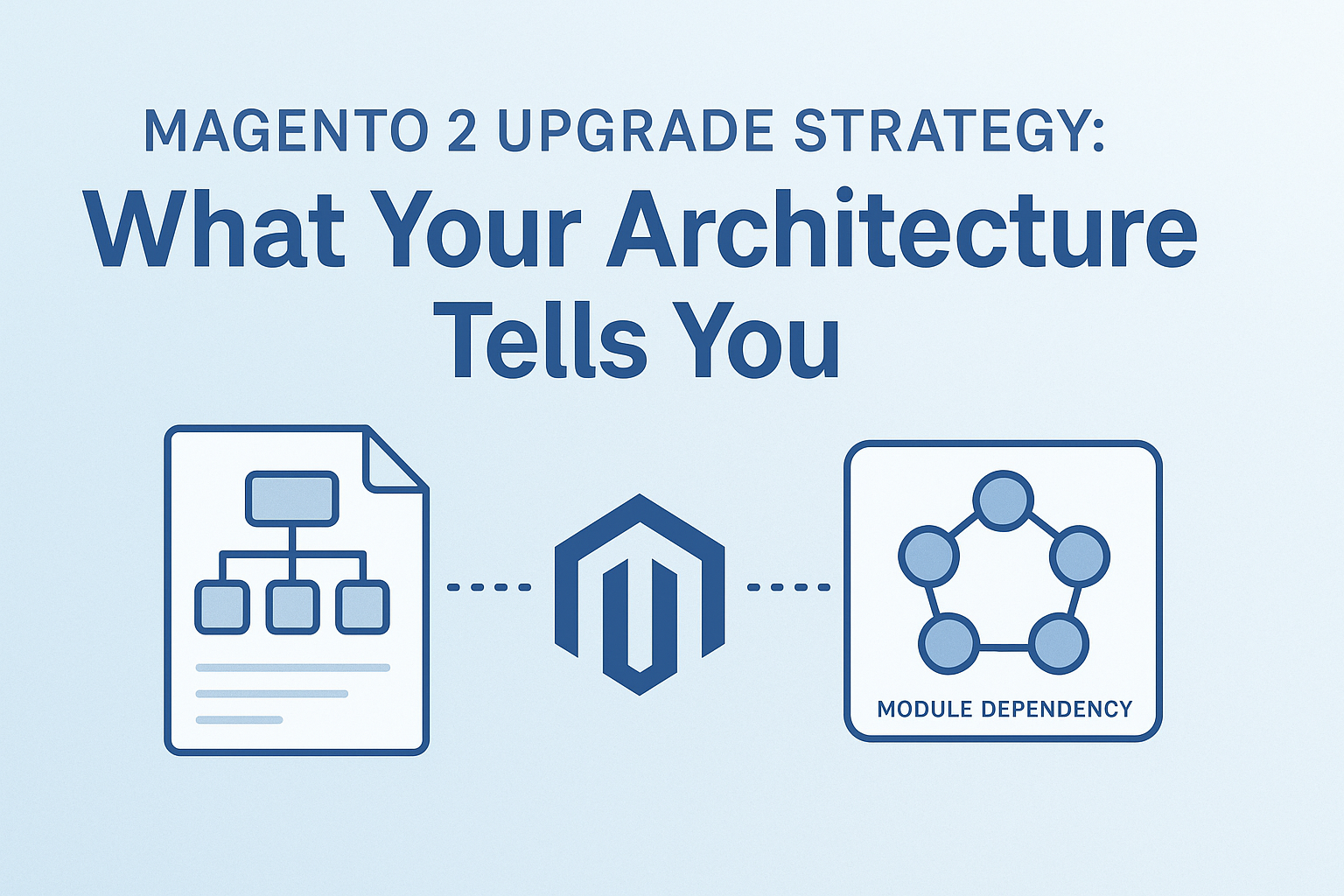Magento 2 Code Architecture Best Practices
Follow Magento 2 code architecture best practices to build clean, modular, scalable eCommerce solutions that are easy to test, extend, and maintain.

Short-term Magento decisions often have long-term consequences. What seems like a fast path to delivery can quietly build up performance bottlenecks, compatibility issues, and increased maintenance overhead. For technical managers, these hidden costs can erode velocity and stability across your stack.
This post highlights key architecture pitfalls that tend to surface over time:
By examining where these costs originate and how to identify them early, you can make better architecture decisions that keep your Magento implementation sustainable as your business grows.
Magento uses the Entity-Attribute-Value (EAV) model to allow flexible storage of product and category attributes. This makes it easy to define custom attributes without altering database schema—but the tradeoff is query complexity. Each attribute is stored in its own table (e.g., varchar, int, decimal), and retrieving the full data set for a product requires joining across multiple tables.
This structure may perform adequately with a small catalog, but as the number of products and attributes increases, performance begins to degrade—especially for filtering, sorting, or faceted navigation.
eav_attribute table.Magento's reliance on Elasticsearch (or OpenSearch) for catalog search enables robust full-text indexing and filtering. But the default configuration is designed for flexibility, not efficiency—and if left untouched, the search stack often becomes a bottleneck.
catalogsearch_fulltext.xml.elasticsearch6.xml.The Magento marketplace—and broader ecosystem—offers thousands of extensions. But when third-party modules are installed without vetting, they introduce cascading architecture issues:
bin/magento module:status.di.xml for risky overrides.Technical managers play a critical role in identifying architectural obstacles. Regularly ask your team targeted questions to detect friction early and prioritize remediation:
Poor architecture rarely crashes dramatically—it erodes your velocity over time. Proactively managing these hidden costs transforms your Magento implementation from reactive maintenance to strategic asset.

Follow Magento 2 code architecture best practices to build clean, modular, scalable eCommerce solutions that are easy to test, extend, and maintain.

Improve Magento 2 performance with a systems-level approach. Optimize Elasticsearch, streamline EAV queries, and refine frontend architecture for faster, more scalable eCommerce.

Planning a Magento 2 upgrade? Learn how your site’s architecture—modules, custom code, and APIs—can guide a safer, smarter upgrade strategy that reduces risk and improves long-term stability.